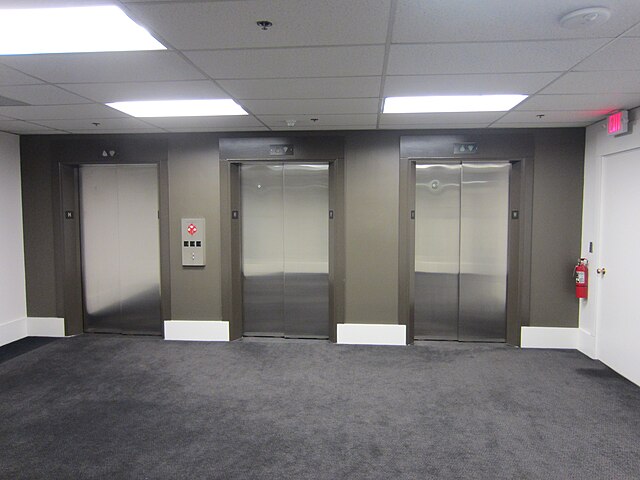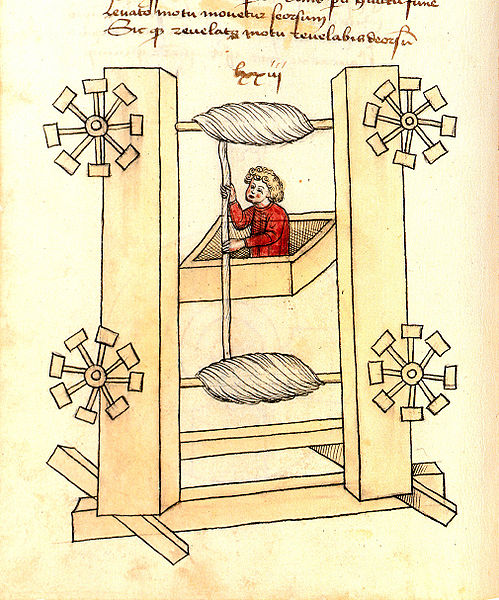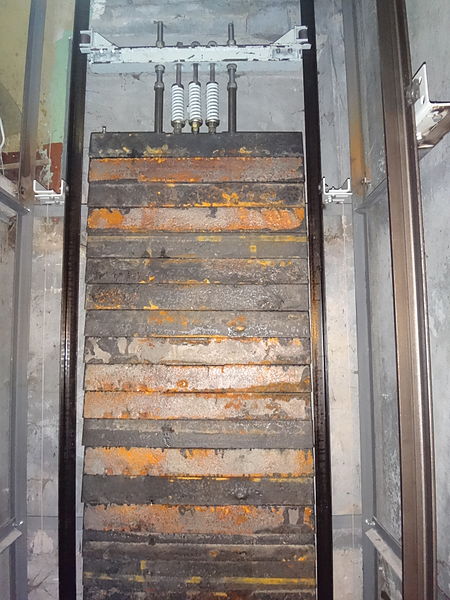An elevator or lift is a machine that vertically transports people or freight between levels. They are typically powered by electric motors that drive traction cables and counterweight systems such as a hoist, although some pump hydraulic fluid to raise a cylindrical piston like a jack.
Outside of typical elevators, shown in an office building in Portland, Oregon
This elevator to the Alexanderplatz U-Bahn station in Berlin is built with glass walls and doors, exposing the inner workings.
Elevator design by the German engineer Konrad Kyeser (1405)
Elisha Otis demonstrating his safety system, at the New York Crystal Palace, 1853
A counterweight is a weight that, by applying an opposite force, provides balance and stability of a mechanical system. The purpose of a counterweight is to make lifting the load faster and more efficient, which saves energy and causes less wear and tear on the lifting machine.
César Pelli's Ratner Athletic Center uses cables, masts and underground counterweights as a load-bearing support structure.
Leaning Tower of Pisa has used external counterweights to stabilize the once gradually falling structure.
Counterweight of elevator
Concrete counterweights on a tower crane








